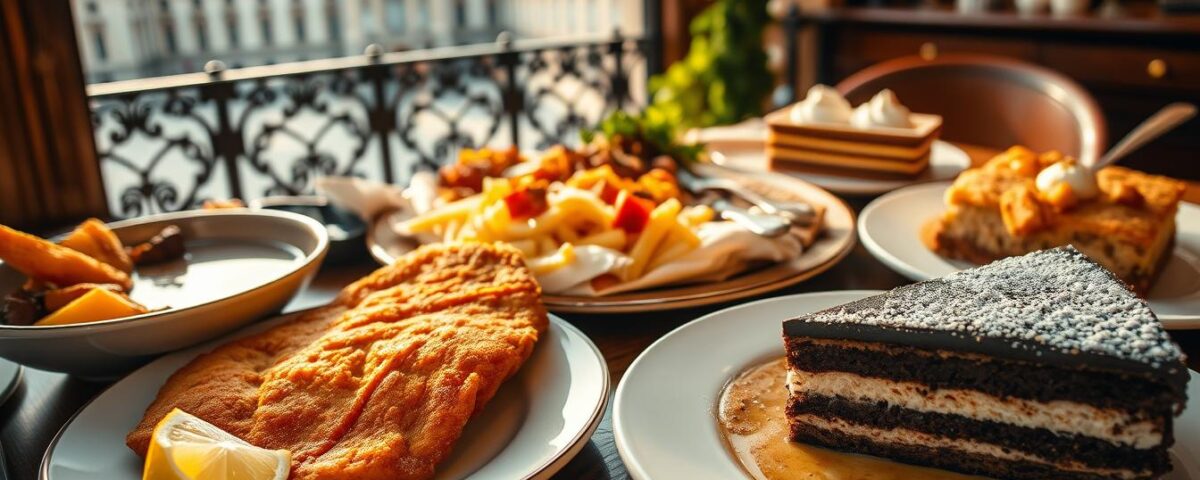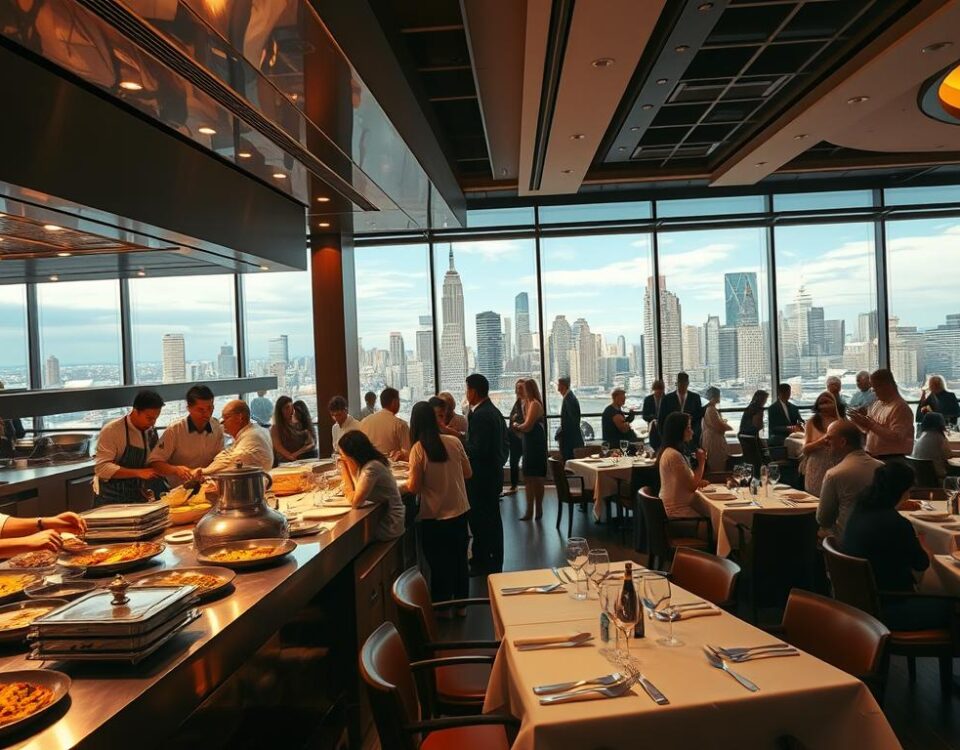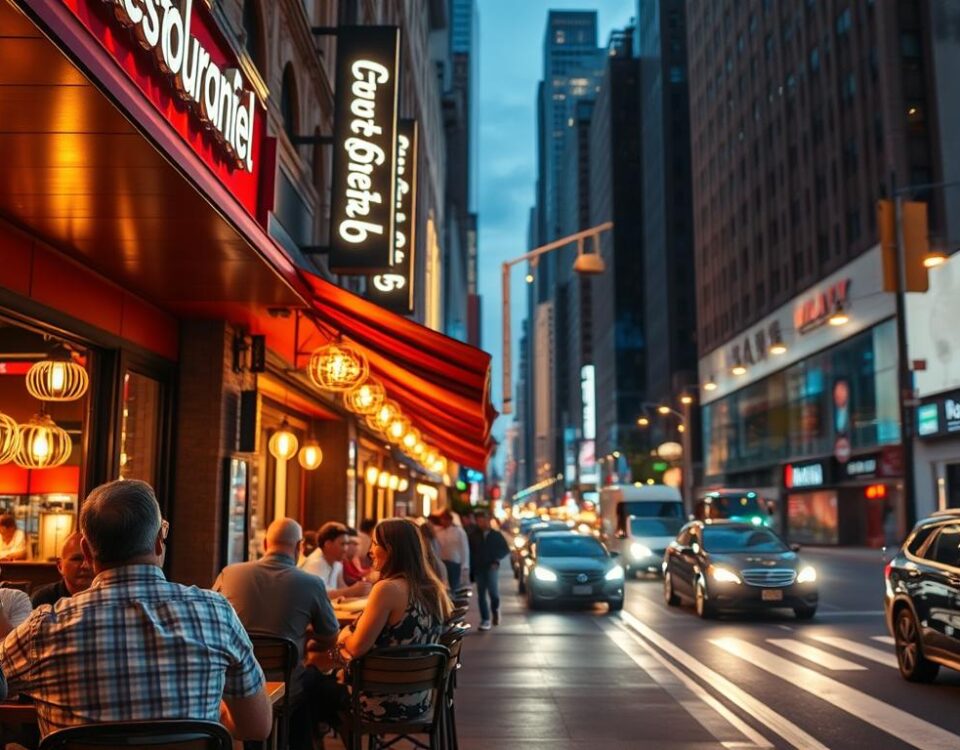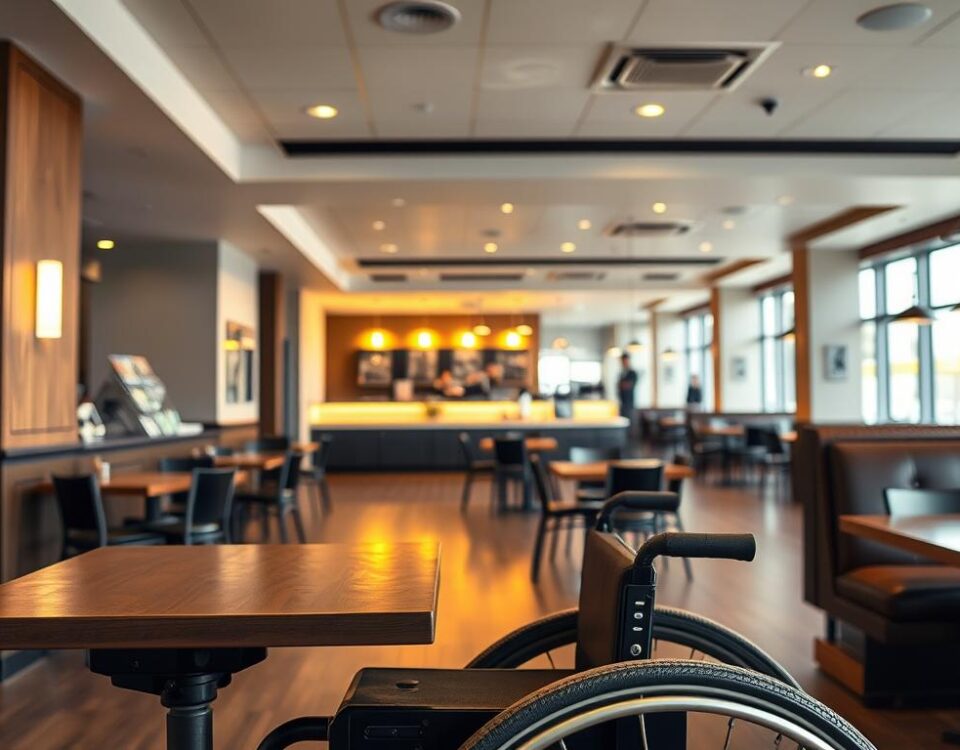
What to Taste in Prague If You Want the Real Czech Experience
June 10, 2025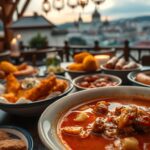
What to Eat in Budapest for a Truly Hearty Hungarian Meal
June 10, 2025Did you know 85% of travelers recall meals from Vienna more vividly than those from other European cities? My first bite of Wiener Schnitzel cemented that statistic. The crispy, golden exterior gave way to tender veal, and suddenly, I understood why this city’s flavors linger in memories like old friends.
Exploring the culinary scene here isn’t just about eating—it’s stepping into a story. Recipes passed down through generations whisper of Habsburg-era banquets and cozy coffeehouse debates. Each meal feels like a handshake with history, a chance to taste resilience preserved in butter, flour, and spice.
In this guide, I’ll walk you through seven iconic creations that define Austria’s capital. From soul-warming stews to desserts that dance between sweet and savory, these picks aren’t just meals. They’re edible heirlooms, waiting to connect you to a legacy older than the cobblestones beneath your feet.
Key Takeaways
- Viennese cuisine blends Central European flavors with royal and rustic influences.
- Iconic recipes like Tafelspitz trace back to imperial kitchens.
- Local coffeehouses serve as cultural hubs, pairing desserts with history.
- Seasonal ingredients shape menus, ensuring year-round culinary surprises.
- Many dishes reflect Austria’s multicultural past through spices and techniques.
My Culinary Journey in Vienna
Stepping off the train at Westbahnhof, I immediately noticed the air smelled like butter and roasted chestnuts. My stomach growled as I passed bakeries displaying spirals of Apfelstrudel and golden Kaiserschmarrn piled high. I hadn’t expected the city’s energy to taste so sweet.
How I Fell in Love with Viennese Flavors
My first real meal here wasn’t in a fancy restaurant. It came from a cramped stall near Naschmarkt, where a vendor handed me a paper cone of Käsekrainer—smoky sausage oozing molten cheese. As I bit into that crispy casing, I realized Austrian comfort food speaks a universal language.
The Excitement of Discovering Local Cuisine
I spent weeks chasing flavors down cobblestone alleys. One rainy afternoon led me to a basement tavern serving Gulasch so rich it made my spoon stand upright. Another day, I stumbled upon a century-old café where waiters in bowties balanced trays of Sachertorte like sacred artifacts.
| Spot Type | Must-Try Item | Best Time to Visit |
|---|---|---|
| Street Stands | Käsekrainer | Late Night |
| Historic Cafés | Einspänner Coffee | Mid-Morning |
| Neighborhood Beisln | Beuschel (Herzhaftes) | Sunday Lunch |
What began as curiosity became obsession. I kept returning to my favorite schnitzel spot, memorizing how the breadcrumbs crackled like autumn leaves underfoot. Each meal felt like unlocking a delicious secret—one I’m still savoring years later.
Imperial Heritage and Traditional Influences
History here isn’t just in museums—it’s on your plate. Many iconic austrian food staples began as royal cravings. Emperor Franz Joseph I once demanded his chefs create meals “fit for both court and countryside,” blending luxury with simplicity.
Legendary Recipes and Historical Anecdotes
Take Wiener Schnitzel—that golden veal cutlet. Though some claim Italian roots, Austrians perfected it during Habsburg rule. Franz Joseph reportedly ate it weekly. Another favorite? Tafelspitz, a boiled beef dish simmered with root vegetables. It’s often served with horseradish sauce and tangy potato salad, a pairing unchanged since the 1800s.
Influences from the Habsburg Era
The empire’s vast reach shaped austrian cuisine in surprising ways. Spices from Hungary, dairy from Alpine farms, and Bohemian baking techniques merged into dishes like Rindsuppe (beef broth). Even humble sides tell stories—the vinegar-based potato salad accompanying schnitzel reflects Bavarian trade routes.
| Dish | Royal Connection | Key Ingredient |
|---|---|---|
| Tafelspitz | Franz Joseph’s favorite | Beef |
| Wiener Schnitzel | Habsburg-era refinement | Veal |
| Kaiserschmarrn | Named for Emperor Franz Joseph I | Flour & Raisins |
Today, these recipes remain staples. I’ve tasted beef stews in cellar taverns where Franz Joseph’s portrait still hangs. Each bite feels like chewing on history—flaky, savory, and layered like the empire itself.
Exploring the Vienna traditional dish list
Crisp breadcrumbs crackled under my fork as I sliced into my first proper Wiener schnitzel at Figlmüller. This wasn’t just fried meat—it was a culinary heirloom, its recipe guarded like state secrets since 1905. Across the city, stories simmer in every kitchen, waiting to be tasted.
Iconic Dishes I Cannot Miss
What makes Wiener schnitzel unforgettable? It’s the ritual. Chefs pound veal thinner than parchment, dredge it in golden crumbs, and fry it until it floats. At historic spots like Plachutta, they’ll tell you the best cuts come from calves raised near the Danube. Pair it with lingonberry jam—trust me, the tartness cuts through the richness perfectly.
Stories Behind Wiener Schnitzel and Sachertorte
The chocolate cake wars began in 1832. Sixteen-year-old Franz Sacher invented his namesake torte for Prince Metternich’s dinner party. Today, Hotel Sacher and Demel Café still feud over who owns the “Original” recipe. I’ve tried both—Demel’s version leans fruitier, while Sacher’s boasts denser layers. Both deserve a fork.
Beyond these legends, the city’s dishes reveal hidden layers. At Café Central, I discovered Scheiterhaufen—a bread pudding stacked like firewood. Bakers here treat cake like architecture, balancing apricot glaze on strudel or dusting powdered sugar over chestnut tortes. Each slice feels like edible time travel.
Pro tip: Book Figlmüller’s basement tables weeks ahead. Their schnitzel spans dinner plates, crispy edges curling like autumn leaves. For food Vienna dreams of, skip the touristy spots near Stephansdom—family-run Beisln near Spittelberg serve heartier portions with fewer crowds.
Adventures in Viennese Street Food
My fingers stuck to the paper wrapper as I bit into a Käsekrainer near Karlsplatz. Hot cheese burst through the smoky sausage casing, and suddenly, I understood why locals queue at midnight for these portable feasts. The city’s street food scene thrums with energy—a delicious democracy where bankers and artists jostle for the same crispy Langos.
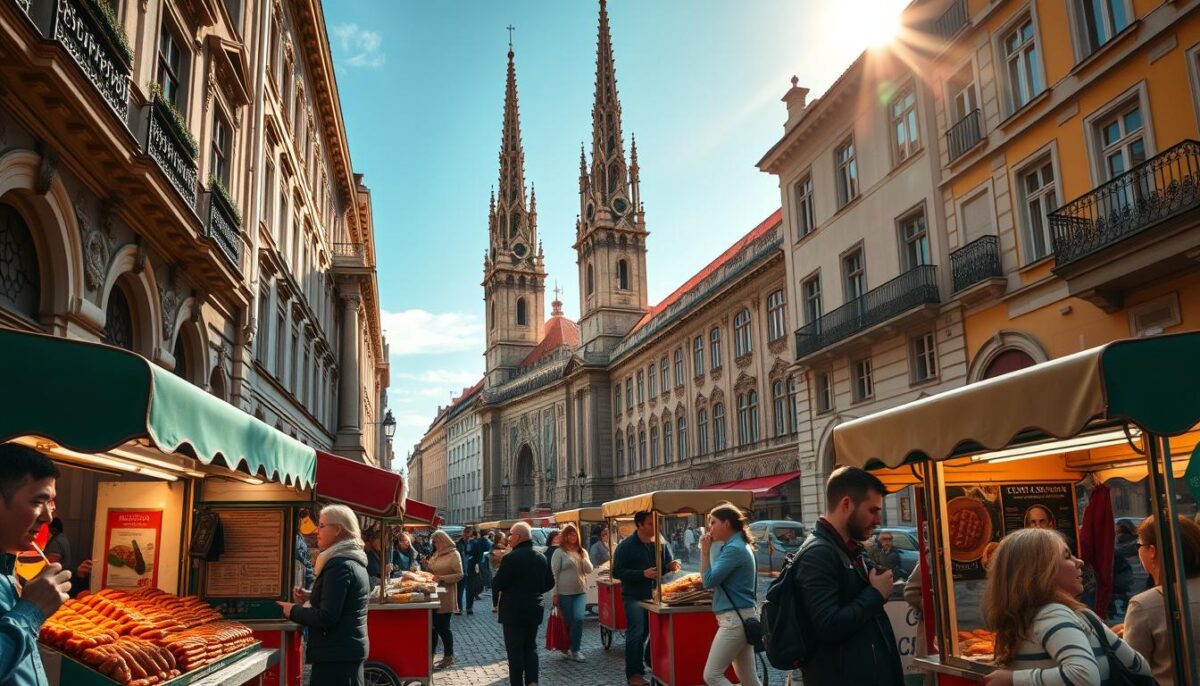
Delicious Käsekrainer and Sausage Delights
At Würstelstand am Hohen Markt, I learned to order like a pro: “Einen Eitrige mit an Schmäh, bitte” gets you a garlicky sausage with humor on the side. Vendors here take pride in their craft—some families have served sausage recipes since the 1950s. Don’t miss the Burenwurst at Bitzinger Würstelstand Albertina, where paprika-kissed links pair perfectly with sharp mustard.
Unexpected Flavors on Every Corner
Beyond sausages, I found surprises. A Turkish immigrant’s Kumpir stall near MuseumsQuartier stuffs baked potatoes with ajvar and feta. At Naschmarkt, a third-generation vendor handed me Bosna—a spiced minced-meat sandwich reflecting Balkan influences. These flavors reveal the city’s living culture, evolving while honoring roots.
| Stand | Must-Try Item | Best Time |
|---|---|---|
| Würstelstand am Hof | Käsekrainer | After 10 PM |
| Leberkas-Pepi | Leberkäse Semmel | Lunch Rush |
| Neni Am Naschmarkt | Sabich Plate | Weekend Brunch |
Pro tip: Follow office workers to hidden gems. The best street food often lurks near transit hubs—I found golden Kartoffelpuffer (potato pancakes) at a U-Bahn exit stall that locals swear cures hangovers. Cash rules here, and a smile earns extra crispy bits.
Coffeehouse Culture and Delectable Desserts
Ordering coffee here isn’t a transaction—it’s a ceremony. Waiters in black vests glide between marble tables, balancing silver trays of Melange and delicate pastry creations. These spaces feel like living museums where every sip comes with a side of history.
My Favorite Viennese Café Experiences
At Café Hawelka, time moves like molasses. The wood-paneled walls still echo with debates between 20th-century artists. I lingered over a Buchteln—fluffy yeast dumplings oozing plum jam—while an elderly regular taught me to dip butter cookies into my coffee. “Sweetens the bitterness,” he winked.
Savoring Melange, Apfelstrudel, and More
The city’s dessert game shines brightest at Demel. Their Apfelstrudel arrives under a blizzard of powdered sugar, the apples still whispering of autumn orchards. Pair it with a Fiaker—black coffee spiked with rum—for a contrast that’ll make your taste buds tango.
| Café | Signature Item | Best Pairing |
|---|---|---|
| Café Central | Imperial Torte | Einspänner Coffee |
| Demel | Sachertorte | Viennese Melange |
| Hawelka | Buchteln | Kleiner Brauner |
What makes these spots unforgettable? It’s the experience—newspapers on brass racks, chandeliers casting honeyed light, and that first bite of chocolate-glazed Mozarttorte dissolving on your tongue. Pro tip: Arrive mid-afternoon when sunlight slants through windows, turning powdered sugar into edible glitter.
Savoring Hearty Lunches and Dinners
Midday sunlight streamed through stained-glass windows at Plachutta as I unfolded my napkin. This wasn’t just dining—it was a masterclass in Austrian comfort. Waiters moved like conductors, orchestrating silver platters of bone marrow and crusty bread rolls.
Where I Found the Best Tafelspitz
My first forkful of Plachutta’s Tafelspitz made time slow down. The potatoes, boiled in the same broth as the beef, absorbed marrow-rich flavors like sponges. Caramelized onions added sweetness that danced with horseradish’s sharp kick. “Eat the apple sauce last,” my server advised. “It cleanses the palate for the next bite.”
Memorable Dining Moments in Traditional Restaurants
Three days later, Café Landtmann’s wood-paneled walls witnessed my love affair with Rindsgulasch. Tender beef swam in paprika-spiked gravy, flanked by dumplings that dissolved on contact. Regulars chuckled as I mopped the plate with dark rye—a local sign of approval.
These spots understand meal theater. At Gasthaus Pöschl, they present potatoes three ways with roast pork: crushed, roasted, and gratinéed. Each version outshines the last. Pro tip: Book late lunches to avoid crowds. You’ll savor every bite as sunlight gilds the checkered tablecloths.
For authentic dining magic, try these spots:
- Plachutta Wollzeile: Their broth alone deserves awards
- Café Landtmann: Imperial-era elegance meets rib-sticking stews
- Gasthaus Pfudl: Hidden courtyard with perfect schnitzel-to-potato ratios
Uncovering Hidden Culinary Gems
Locals know the real magic happens away from the main squares. My quest for authentic flavors led me down residential alleys where ivy-covered places serve recipes unchanged since the 1950s. These spots don’t need flashy signs—their regulars keep them thriving.
Intimate Local Cafés and Secret Spots
In the 16th region, I stumbled upon Café Eiles. Its cracked leather booths and handwritten menus felt like stepping into someone’s kitchen. The owner recommended Powidltascherl—plum-filled pockets dusted with poppy seeds. “We make them how my Oma did,” she said, sliding a plate across the marble counter.
Weekend markets became my treasure hunts. At Brunnenmarkt, a vendor handed me Kärntner Kasnudeln—cheese dumplings from Austria’s southern region. “Eat it with sauerkraut,” she insisted. The tangy crunch balanced the creamy filling perfectly.
“The best flavors hide where the tourists don’t go.”
| Venue | Specialty | Neighborhood |
|---|---|---|
| Lugeck Food Stall #12 | Tyrolean Speckknödel | Innere Stadt |
| Café Hummel | Marillenknödel | Josefstadt |
| Yppenplatz Market | Burgenland Pumpkin Seed Oil | Ottakring |
Evening wanders through the 7th region revealed street carts serving Käsekrainer with homemade mustard. Near Westbahnhof, I found a family-run stand frying street-style Kartoffelpuffer using potatoes from their farm. Their secret? A pinch of caraway in the batter.
These discoveries taught me a truth: Vienna’s soul lives in its quiet corners. From cellar taverns in Margareten to bakeries in Döbling, every region guards delicious secrets waiting for curious forks.
Balancing Fine Dining with Casual Eats
I nearly spilled champagne on my linen napkin at Steirereck while across town, a chef at Gasthaus Pfudl wiped his hands on an apron splattered with Gulasch sauce. This city thrives on culinary contrasts—polished silverware and paper menus coexisting like old friends.
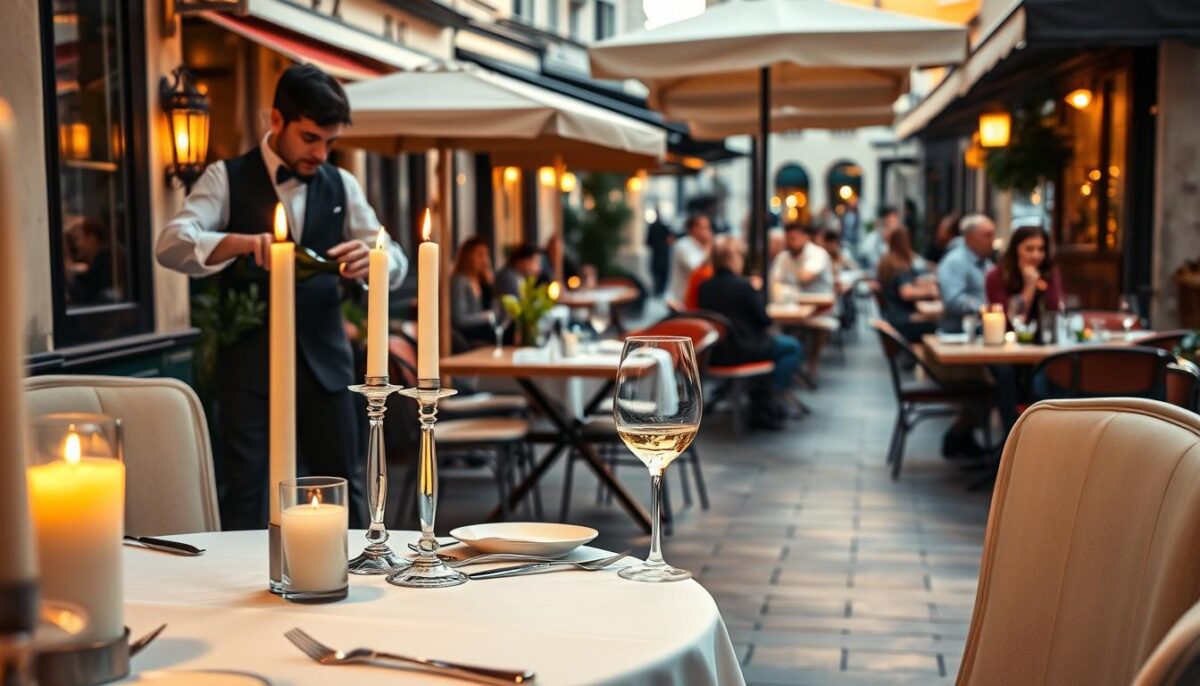
My Encounters with Upscale and Authentic Venues
Fine dining here feels like theater. At Michelin-starred Silvio Nickol, waiters presented duck breast with tweezers, each beetroot swirl placed like abstract art. Yet my most memorable meal came from a restaurant near the canal—wooden benches, checkered curtains, and a grandmother rolling Knödel by the window.
I learned to mix both worlds. Mornings began with buttery croissants at Café Prückel’s marble tables. Evenings found me at family-run restaurants where menus changed with the market. The cuisine spectrum amazed me: truffle shavings one night, caraway-spiced sausages the next.
| Aspect | Upscale Venues | Casual Spots |
|---|---|---|
| Ambiance | Chandeliers, hushed tones | Lively chatter, shared tables |
| Service Style | Seven-course wine pairings | Self-serve condiment jars |
| Price Range | $$$ | $ |
Pro tip: Book fancy lunches instead of dinners. I savored Steirereck’s tasting menu at noon for half the evening price. Nights were for city pubs serving Tiroler Gröstl—fried potatoes with fried egg, best eaten with a cold Gösser beer.
This dance between polished and rustic taught me the cuisine isn’t about price tags. It’s about passion—whether expressed through gold-leaf desserts or dumplings shaped by calloused hands.
Travel Tips for a Delicious Viennese Experience
Navigating the city’s culinary treasures requires more than hunger—it needs smart strategy. I learned to time meals like clockwork: early lunches beat crowds at top taste destinations, while late-night bites shine at sausage stands. For stress-free exploration, grab a weekly transit pass—trams and U-Bahn lines connect food hubs faster than your GPS can say “Guten Appetit“.
Smart Planning and Must-Visit Areas
Skip packed Christmas markets at Stephansplatz. Instead, visit Spittelberg’s twinkling lanes on weekday mornings—you’ll savor roasted chestnuts and Punsch without elbow battles. Locals taught me this golden rule: book dinner reservations two weeks ahead for iconic spots, but leave room for spontaneous treat discoveries at neighborhood Beisln.
These districts stole my heart:
| Area | Specialty | Best Time |
|---|---|---|
| Naschmarkt | Global street food | Saturday mornings |
| Neubau | Third-wave coffee | Mid-afternoon |
| Margareten | Family-run bakeries | Sunrise |
“The real magic? It’s in the side streets where grandmothers still argue over strudel thickness.”
Balance indulgence with downtime—schedule food comas between museum visits. My perfect way to reset? People-watching at Stadtpark with a Marillenknödel (apricot dumpling) from a nearby kiosk. Let the flavors linger as you stroll, letting each bite become part of your experience.
Conclusion
Sipping a crisp Grüner Veltliner in a sunlit courtyard, I realized meals here aren’t just eaten—they’re celebrated. My journey taught me that every bite carries centuries of craft, from wine cellars preserving ancestral vintages to cheesemongers aging wheels in Alpine caves. These flavors don’t just satisfy hunger; they spark conversations across generations.
Embrace slow savoring. Let apricot-infused cheese melt on your tongue as you people-watch in grand cafés. Pair peppery wine with smoky sausage at midnight stands. The magic lies in contrasts—time-honored recipes meeting bold innovation.
What stays with me? The clink of glasses in hidden taverns. The pride in a waiter’s eyes as he serves cheese-stuffed dumplings. This city feeds both body and soul, blending heritage with unexpected twists.
Pack curiosity alongside your appetite. Let cobblestone alleys guide you to caramelized onion tarts and pumpkin seed oil drizzled over fresh bread. Your table awaits—where every meal becomes a story worth retelling.
FAQ
What’s the best way to experience Austrian cuisine in Vienna?
I found that blending café visits with street food stalls and sit-down meals gave me a full taste of local culture. Don’t skip classics like Wiener Schnitzel paired with potato salad or a slice of Sachertorte at historic spots like Café Demel.
How does Habsburg-era history influence Viennese dishes?
Many recipes, like Tafelspitz (boiled beef), trace back to Emperor Franz Joseph’s reign. I loved how buttery Apfelstrudel and layered pastries reflect the empire’s blend of Hungarian, Czech, and Austrian flavors.
Are there vegetarian options in traditional restaurants?
Absolutely! I enjoyed Käsespätzle (cheesy noodles) and Erdäpfelsalat (potato salad) at places like Figlmüller. Many menus also feature seasonal soups or savory strudels stuffed with spinach or pumpkin.
What makes Viennese coffeehouses unique?
It’s the atmosphere! Sipping a melange (espresso with milk) at Café Central felt like stepping into the past. Pair your drink with a Marillenkuchen (apricot cake) or a flaky Apfelstrudel dusted with powdered sugar.
Where can I try authentic street food?
Head to Naschmarkt or Christmas markets for Käsekrainer (cheesy sausage) or Langos (fried flatbread). I still dream about the crispy, garlicky Langos topped with sour cream and cheese!
Is fine dining worth it in Vienna?
For special occasions, yes! Restaurants like Steirereck reinvent classics with modern twists. But I also adored cozy spots like Gasthaus Pöschl for hearty Goulash or Beuschel (offal stew) that kept me warm on chilly days.
What’s a must-try dessert beyond Sachertorte?
Try Topfenstrudel—a creamy quark-filled pastry—or Kaiserschmarrn (shredded pancake) with plum compote. At Café Landtmann, I devoured both while soaking in the old-world charm.
